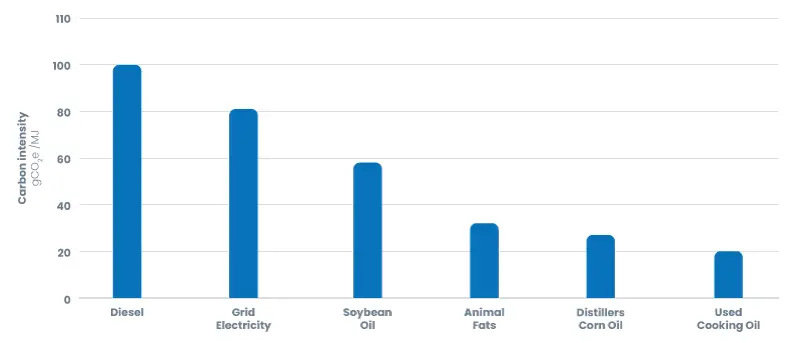And now, the comeback. Biofuels are already widely used. When you refuel at a gas station, you are probably purchasing a mixture of diesel and biodiesel, or of gasoline and ethanol. Biofuels represent more than 7% of fuel for European road transport, and are likely to reach 20% of fuel consumption within 5 years, according to the IEA.
What can this do for Greenhouse Gas emissions? Look at the carbon intensity chart. Ethanol (made from corn) cuts emissions by 75% relative to diesel – while used cooking oil cuts it by 80%.
Feedstock carbon intensity

Source: Diamond Green Diesel/Group Valero, Copyright © Valero Marketing and Supply Company 2001-2002. All rights reserved.
Doesn’t fuel from corn and soybeans take food from the mouths of babes? Well, potentially. That’s where the second-generation technology comes in – fuel from waste.

